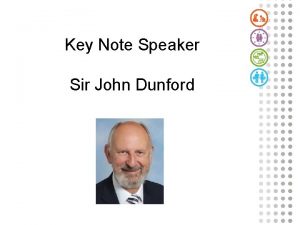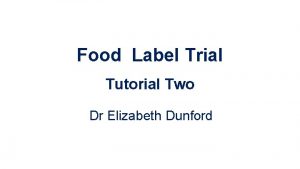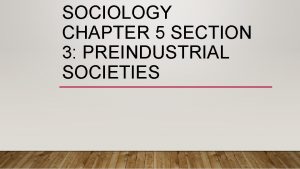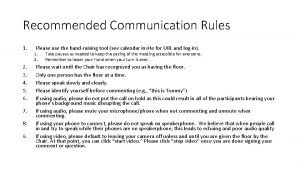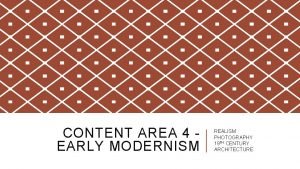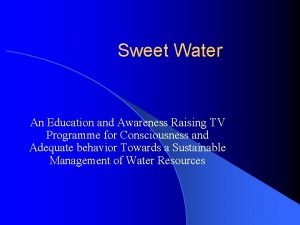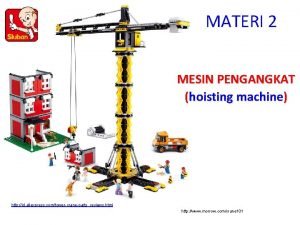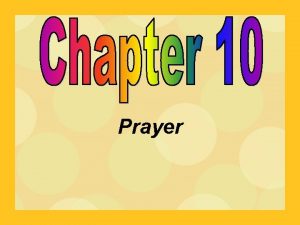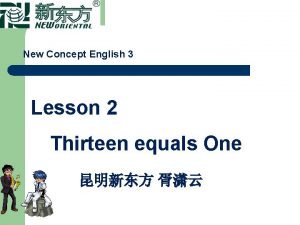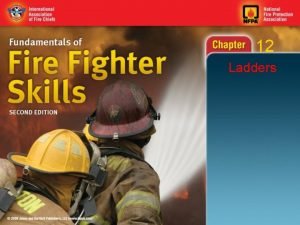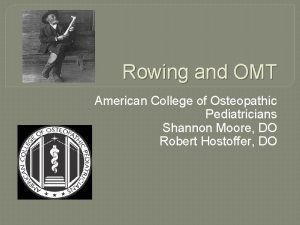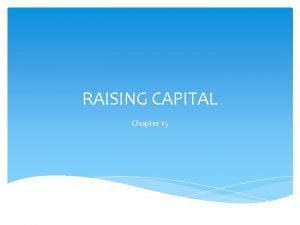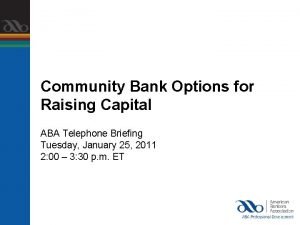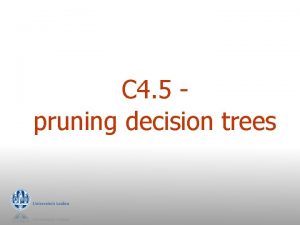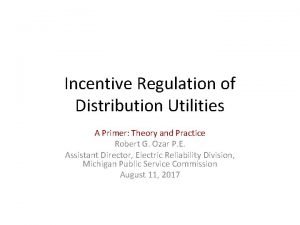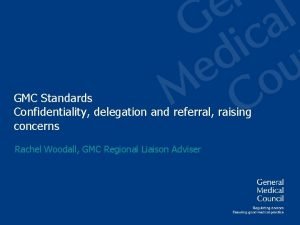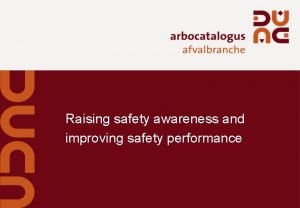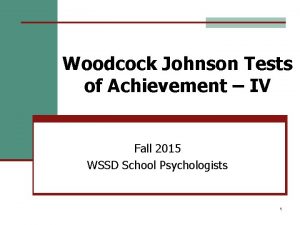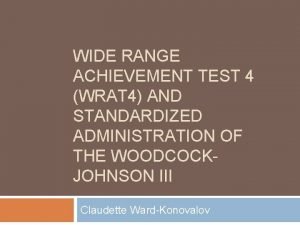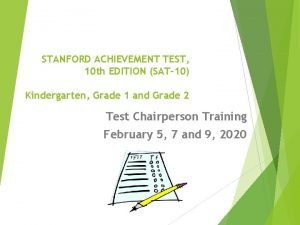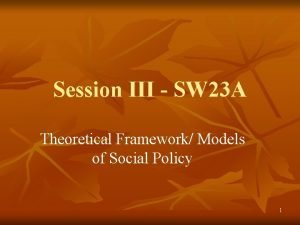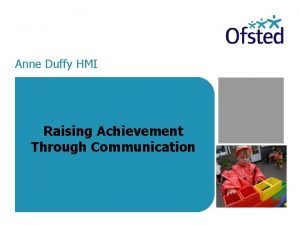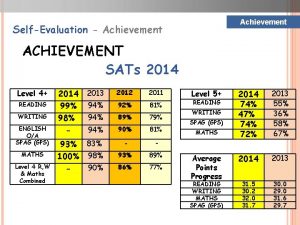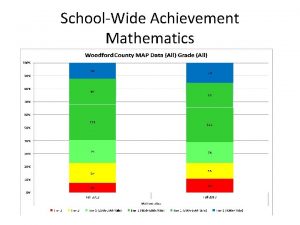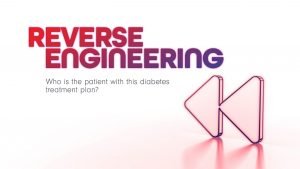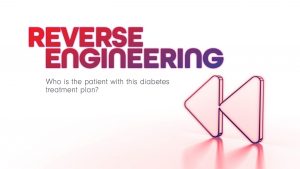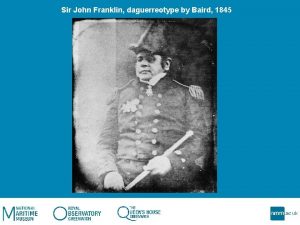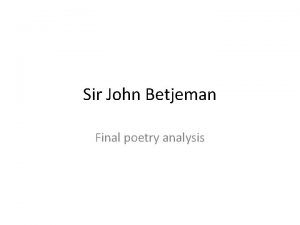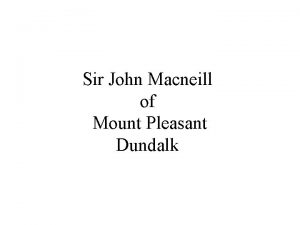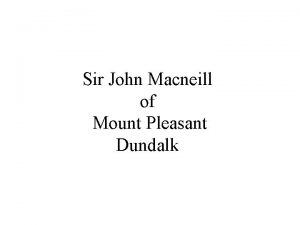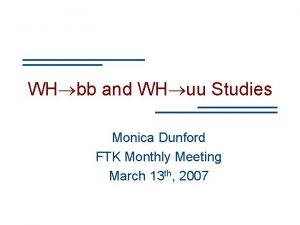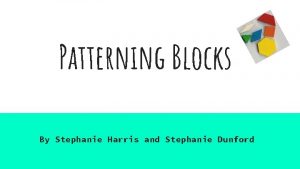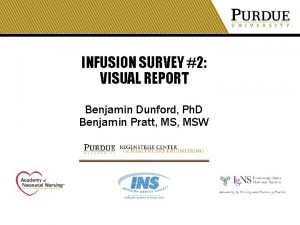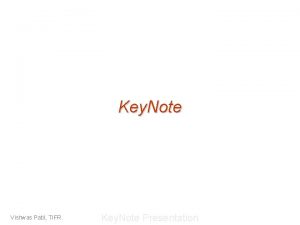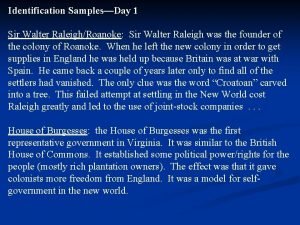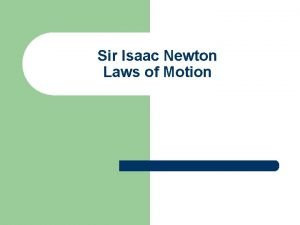Key Note Speaker Sir John Dunford Raising achievement

















































- Slides: 49

Key Note Speaker Sir John Dunford

Raising achievement and closing gaps: using the pupil premium effectively Autumn Headteachers’ Conference Warwickshire 15 November 2018 John Dunford 2

Raising achievement and closing the gap: the priorities Raising achievement and Closing the gap Excellence and Equity 3

Attainment PP pupils Other pupils Time

Current strategies: maximum impact What PP strategies are making the greatest impact in your school? 5

Gap and disadvantaged attainment at 11, 2017 Gap at 11 PP/NPP Birmngha m 16 49 / 65 Stoke 15 48 / 63 Coventry 17 48 / 65 Walsall 25 39 / 64 Dudley 27 38 / 63 Warwks 26 42 / 68 Sandwell 15 49 / 64 Wolvhmpto n 18 50 / 68 Solihull 21 49 / 70 Worcester 26 38 / 64 Staffs 21 48 / 69 National 20 48 / 68 Percentage of 11 year olds reaching expected standard (PP / Non-PP)

Gap and disadvantaged attainment at 16, 2017 pp Gap at 16 PP/NPP Birmngham -0. 33 -0. 18 / 0. 15 Stoke -0. 45 -0. 38 / 0. 07 Coventry -0. 45 -0. 43 / 0. 02 Walsall -0. 61 -0. 62 / 0. 01 Dudley -0. 54 -0. 51 / 0. 03 Warwks -0. 62 -0. 45 / 0. 17 Sandwell -0. 37 -0. 39 / 0. 02 Wolvhmpton -0. 48 -0. 34 / 0. 14 Solihull -0. 56 -0. 55 / 0. 01 Worcester -0. 62 -0. 52 / 0. 10 Staffs -0. 51 -0. 53 / 0. 02 National -0. 51 -0. 40 / 0. 11 Average Progress 8 score (PP and Non-PP)

Missing talent • • 8 Sutton Trust report, June 2015. Key findings: 15% of highly able pupils who score in the top 10% nationally at age 11 fail to achieve in the top 25% at GCSE Boys, and particularly pupil premium eligible boys, are most likely to be in this missing talent group Highly able pupil premium pupils achieve half a grade less than other highly able pupils, on average, with a very long tail to underachievement Highly able pupil premium pupils are less likely to be taking GCSEs in history, geography, triple sciences or a language http: //www. suttontrust. com/researchive/missing-talent/

Looked-after children: some statistics 9 68% of looked-after children achieved level 4 in reading, compared with 89% of others. The gap at 11 is even larger in writing and mathematics. 12% of looked-after children achieved 5+ GCSEs at A*-CEM, compared with 53% of others. 33% of care leavers become NEET, compared with 13% of all young people. 6% of care leavers go to university, compared with 40% of others. This is less than the percentage of care leavers who go to prison. 67% of looked-after children have SEN cf. 18% of the total population. Of those, 29% have a statement cf. 2. 8% of all children. 62% of children become looked-after as a result of abuse or neglect and they have a much higher incidence of mental health problems. Looked-after children especially need our additional support to achieve their potential and improve their life chances.

Focus for the pupil premium The gap: Decide on comparators for PP students PP / Non-PP in your school / Non-PP pupils nationally Other forms of disadvantage What is your ambition? In 10% of schools nationally, FSM attainment is above the national average for ALL pupils 10 Use evidence of what works Improve transition, especially for disadvantaged Focus relentlessly on the quality of teaching and learning


The over-riding importance of quality first teaching 12 Focus relentlessly on the quality of teaching and learning Improve transition, especially for disadvantaged Spend some PP on raising the quality of teaching and engaging disadvantaged pupils in their learning, e. g. feedback, metacognition Improve the impact of 1: 1 and small group work

Overcoming the barriers • Identify barriers to learning for PP pupils • Decide your desired outcomes • Identify success criteria for each outcome • Choose your PP strategies • Implement strategies with in-depth training • Evaluate strategies regularly • Tell the story: create an audit trail 13

Identifying the barriers to learning for PP pupils What are the barriers to learning for your PP pupils? 14

Identifying the barriers to learning for PP pupils through …. 15 Learning walks PP student shadowing PP student voice Achievement and attendance analysis Parent views SLT, staff and governor views

Turning aims into impact 16 Establish the school’s desired outcomes Set success criteria for each of these Hold yourselves to account for the impact

Deciding your desired outcomes Desired outcomes Improving FSM attainment Reducing gaps Improving attendance Accelerating progress Reducing exclusions Improving behaviour Improving engagement of families Developing skills and personal qualities Extending opportunities Improving transition Good destination data 17 Success criteria

Choosing your school strategies 18 What strategies will produce these desired outcomes and help you to achieve your success criteria? “Individual need, classroom rigour” Use evidence of what works In-depth staff training on chosen strategies

Evaluating your school strategies External review and school self-review are both important Evaluate impact of strategies http: //tscouncil. org. uk/guide-effective-pupil-premium-reviews/ Compare your school’s PP performance with like schools http: //educationendowmentfoundation. org. uk/toolkit/families-ofschools/ 19

A clear audit trail on the school website Person responsible Cost Evaluation Impact Improve feedback 1: 1 tuition Attendance officer Peer tutoring etc Plus case studies of impact on (anon) individual pupils How good is the PP audit trail in your school? 20

Use evidence to choose the best strategies for your school 21 q To support individuals in overcoming barriers to learning q To improve the quality of teaching, learning and assessment

The opportunity 22 Schools should not wait for politicians to tell you what to do with the pupil premium The government isn’t telling schools how to close the gap It’s for schools to decide how to use PP Stop looking up and start looking out

The evidence of what works elsewhere Seek out excellent practice in other schools www. pupilpremiumawards. co. uk Study local, regional, national international evidence Use the Education Endowment Foundation toolkit https: //educationendowmentfoundation. org. uk/resourc es/teaching-learning-toolkit Use published reports: 23 the NFER report on success and good practice www. nfer. ac. uk/publications/PUPP 01 Ofsted surveys http: //www. ofsted. gov. uk/resources/pupilpremium-how-schools-are-spending-funding-successfullymaximise-achievement https: //johndunfordconsulting. co. uk/blog/ August 2015

EEF Toolkit Strategies 1. 2. 3. 4. 5. 6. 7. 8. 9. 10. 11. 12. 13. 14. 15. 16. 17. Arts participation Aspiration interventions Behaviour interventions Block scheduling Collaborative learning Digital technology Early years intervention Extending school time Feedback Homework (Primary) Homework (Secondary) Individualised instruction Learning styles Mastery learning Mentoring Meta-cognition and self-regulation One to one tuition 18. 19. 20. 21. 22. 23. 24. 25. 26. 27. 28. 29. 30. 31. 32. 33. 34. Oral language interventions Outdoor adventure learning Parental involvement Peer tutoring Performance pay Phonics Physical environment Reading comprehension strategies Reducing class size Repeating a year School uniform Setting or streaming Small group tuition Social and emotional learning Sports participation Summer schools Teaching assistants

EEF Toolkit Strategies LOW IMPACT HIGH COST LOW IMPACT LOW COST 25 HIGH IMPACT HIGH COST HIGH IMPACT LOW COST

EEF Toolkit 26

Using teaching assistants effectively 27 The DISS project: Deployment and Impact of Support Staff www. oxfordprimary. co. uk http: //fdslive. oup. com/www. oup. com/oxed/primary/liter acy/osi_teaching_assistants_report_web. pdf? region=u k EEF report on Making Best Use of Teaching Assistants http: //educationendowmentfoundation. org. uk/uploads/p df/TA_Guidance_Report_Interactive. pdf (March 2015) Maximising the impact of teaching assistants website: http: //maximisingtas. co. uk/ What impact are your teaching assistants making?

Using teaching assistants effectively EEF/TES free online course Practical examples of good practice in TA deployment https: //educationendowmentfoundation. org. uk/resource s/making-best-use-of-teaching-assistants/ta-onlinecourse/ Alongside the course, there is a free pack of resources, including: 28 A list of six TA-led projects that have shown a marked positive impact on pupil’s learning; The EEF guidance report on making best use of TAs; An online audit tool, Red Amber Green (RAG) selfassessment, interventions ‘health-check’ and a suggested change process.

Building blocks of success with PP School culture ü ü ü An ethos of attainment for all pupils An unerring focus on high quality teaching High aspirations and expectations 100 per cent buy-in from all staff Evidence (especially the EEF Toolkit) is used to decide on which strategies are likely to be most effective in overcoming the barriers to learning of disadvantaged pupils. Particular consideration is given to high-impact, low-cost strategies. ü Able to demonstrate positive impact of all strategies ü In-depth training for all staff on chosen strategies ü Every effort is made to engage parents/ carers in the education and progress of their child 29

Building blocks of success with PP Individual support ü Identification of the main barriers to learning for disadvantaged pupils ü Individualised approach to addressing barriers to learning and emotional support ü Focus on outcomes for all individual pupils ü Frequent monitoring of the progress of every disadvantaged pupil ü When a pupil’s progress slows, interventions are put in place rapidly ü Teachers know which pupils are eligible for pupil premium ü The needs are recognised of disadvantaged children in specific groups, e. g. high ability pupils, looked-after children 30

Building blocks of success with PP School organisation ü Deployment of the best staff to support disadvantaged pupils ü Excellent collection, analysis and use of data relating to individual pupils and groups ü Performance management is used to reinforce the importance of this agenda ü Effectiveness of teaching assistants is improved through training and better deployment ü Governors are trained on pupil premium ü Pupil premium funding is ring-fenced to spend on the target group ü Effectiveness of interventions is evaluated frequently and adjustments made as necessary ü A senior leader has oversight of PP 31

25 low-cost high-impact strategies 1. 2. 3. 4. 5. 6. 7. 8. 9. 10. 11. 12. 13. Create and maintain an ethos of attainment for all pupils Maintain an unerring focus on high quality teaching Have 100 per cent buy-in from all staff Identify the main barriers to learning Frequently monitor the progress of every disadvantaged pupil When a pupil’s progress slows, put interventions in place rapidly Deploy the best staff to support disadvantaged pupils Collect, analyse and use data relating to individual pupils + groups Increase the impact of teaching assistants Replace some 1: 1 support with small group work Evaluate the effectiveness of interventions and make adjustments as necessary Provide in-depth training for all staff on chosen strategies Ensure that all teachers know which pupils are PP-eligible 32

25 low-cost high-impact strategies 14. Use evidence (especially the EEF Toolkit) to decide on optimum strategies to address barriers to learning, including: 15. Feedback 16. Meta-cognition 17. Mastery learning 18. Reading comprehension 19. Collaborative learning 20. Oral language interventions 21. Peer tutoring 22. Agree among the staff that when they mark a set of books, they mark the books of disadvantaged pupils first 23. Use performance management to reinforce the importance of pupil premium impact 24. Train governors on pupil premium 25. Have a senior leader in charge of PP spending and impact 33

Using the evidence Consider the evidence of what works in relation to your school, or to the group of schools to which your school belongs 34

Use self-review and accountability to help achieve your school’s aims Accountability to central government, to inspectors, to the local authority, to governing bodies and to parents Accountability must be for impact Use accountability to support successful implementation On PP impact, teachers and school leaders should be holding themselves to account Build your own data sets Is the school meeting its own success criteria? 35

What inspectors are looking for Before the inspection, RAISE Online and the school website are studied for evidence on attainment and on gaps Attendance, exclusions, behaviour, well-being Schools can additional evidence, including case studies PP pupil tracked by inspector Discussions with PP pupils, parents, staff and governors Study of effectiveness of PP spending strategies Study of effectiveness of leadership in monitoring and evaluation Governor involvement Impact, impact

What inspectors are looking for During the inspection, lines of enquiry by inspectors will focus on: what barriers school leaders have identified what the pupil premium is spent on to improve outcomes for eligible pupils what difference this has made how school leaders know this where the evidence of impact is. Impact, impact

What inspectors are looking for See TES blog on 28 March 2017 by Lorna Fitzjohn HMI at https: //www. tes. com/blogs/ofsteds-blog-lorna-fitzjohnregional-director-west-midlands-her-presentation-ofsted-and; Lorna’s slides at https: //www. slideshare. net/Ofstednews/pupilpremiumwhatofst edlooksfor; the TES blog by Sean Harford HMI at https: //www. tes. com/blogs/ofsted-blog-sean-harfordtells-teachers-primaryrocks-event-what-ofsted-really-looks; and, for Early Years information, the TES blog by Gill Jones HMI at https: //www. tes. com/blogs/ofsted-blog-gill-jonesofsteds-myth-busting-guide-early-years Impact, impact

Accountability to parents New regulations Obligation to report to parents on barriers to learning, PP policies and impact Publish an online account of PP amount and plans to spend it For previous year, publish what you spent it on and the impact 39 https: //www. gov. uk/guidance/what-maintained-schools-must-publishonline https: //www. gov. uk/guidance/what-academies-free-schools-andcolleges-should-publish-online

Using curriculum freedoms to help close the gap The school curriculum is everything that happens to a learner in school It is much bigger than the National Curriculum It includes the co-curriculum SCHOOL CURRICULUM NATIONAL CURRICULUM 40

Work ready Ready for further study 41 Life ready

Addressing the critical curriculum questions What curriculum does a C 21 young person need? What curriculum does most for the disadvantaged? Entitlement: Give all young people a fully rounded education – a ‘whole education’ Develop knowledge, skills and personal qualities 42

Social Mobility and Child Poverty Commission in England The Social Mobility Commission states that schools need to focus on developing wider skills alongside improving their academic attainment and highlights the importance of, in their words “Preparing students for all aspects of life, not just exams – supporting the development of character and other non-cognitive aspects of personality that underpin learning… It is not a question of either/or. Schools need to be doing both”

CBI and OECD Thinking, creativity and problem solving John Cridland CBI Director. General shares this view: “Employers sought school leavers who did not just possess a clutch of examination passes but were rounded and grounded. Emphasis on exams and league tables has produced a conveyor belt rather than what I would want education to be - an escalator. ” Are we encouraging and enabling our students to develop these skills? Andreas Schliecher of OECD argues: “Today, schooling needs to be much more about ways of thinking, involving creativity, critical thinking, problemsolving and decisionmaking. ”

The warp and the weft of the curriculum Skills Person al qualities Knowledge

Measuring the impact of a broader curriculum How do we measure what we value, and not be led into valuing only what we can measure? 46

The moral purpose “Our data shows that it doesn’t matter if you go to a school in Britain, Finland or Japan, students from a privileged background tend to do well everywhere. What really distinguishes education systems is their capacity to deploy resources where they can make the biggest difference. “Your effect as a teacher is a lot bigger for a student who doesn’t have a privileged background than for a student who has lots of educational resources” Andreas Schleicher, Times Educational Supplement, 2013 47

Contact John Dunford at jd@johndunfordconsulting. co. uk www. johndunfordconsulting. co. uk Twitter: @johndunford Blog: http: //johndunfordconsulting. wordpress. com/ http: //www. johncattbookshop. com/the-school-leadership-journey 48

Action planning Ø What are the two most important things you have taken from today’s session? Ø What can you and your school do immediately to make a difference for PP learners? How can you improve classroom practice to increase the progress and attainment of PP learners? How can you use accountability to pursue your school’s aims? How can you develop your school curriculum to give every disadvantaged learner a better curriculum? Which pieces of evidence of what works elsewhere are most useful for PP learners in your school? Ø Ø 49 Ø - from the Education Endowment Foundation Toolkit? Ø - from the Building Blocks of Success?
 Sir john dunford
Sir john dunford Elizabeth dunford
Elizabeth dunford John 11
John 11 Difference between note making and note taking
Difference between note making and note taking Example of signal word
Example of signal word Difference between note making and note taking
Difference between note making and note taking Financial documents in order
Financial documents in order Debit note meaning
Debit note meaning What is debit note
What is debit note Note making advantages
Note making advantages Simple discount notes
Simple discount notes Sir john cornforth
Sir john cornforth Sir john cornforth
Sir john cornforth Shylock
Shylock Key partners bmc example
Key partners bmc example Key partners key activities key resources
Key partners key activities key resources Cindy sherman history
Cindy sherman history Raising the mary rose
Raising the mary rose Subsists primarily by raising animals
Subsists primarily by raising animals Tohru raising the floor
Tohru raising the floor Raising agents in food
Raising agents in food Nadar raising photography to the height of art
Nadar raising photography to the height of art Awareness raising tv spot
Awareness raising tv spot Strander machine
Strander machine Prayer is the raising of the heart and mind to god
Prayer is the raising of the heart and mind to god New concept english 3
New concept english 3 Raising an auto in a service station
Raising an auto in a service station Raising finance unit 9
Raising finance unit 9 Trussed beam ladder
Trussed beam ladder 12 guideposts
12 guideposts Caliper motion of ribs
Caliper motion of ribs Raising a godly child in an ungodly world
Raising a godly child in an ungodly world Raising capital definition
Raising capital definition Monophasic liquids are
Monophasic liquids are Community bank capital raising
Community bank capital raising Subtree raising
Subtree raising Raising attainment
Raising attainment Elvenra
Elvenra Disadvantage of raising minimum wage
Disadvantage of raising minimum wage Gmc raising concerns flowchart
Gmc raising concerns flowchart Raising safety awareness
Raising safety awareness Chloe and delgado
Chloe and delgado Section 17-3 practice commonly abused drugs
Section 17-3 practice commonly abused drugs Woodcock johnson classification ranges
Woodcock johnson classification ranges Wrat 4 grade equivalent table
Wrat 4 grade equivalent table Sat-10 kindergarten
Sat-10 kindergarten Industrial achievement performance model
Industrial achievement performance model What is communicative achievement
What is communicative achievement Provincial achievement tests
Provincial achievement tests Tugas perkembangan psikososial remaja
Tugas perkembangan psikososial remaja
